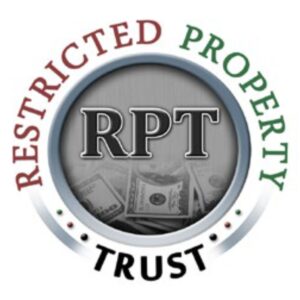Restricted Property Trusts: A Modern Approach to Wealth Shielding
Restricted Property Trusts: A Modern Approach to Wealth Shielding
Blog Article

In the field of managing wealth, protecting assets from claims, and making sure they are secure for future generations is a primary concern for numerous high-net-worth persons. One new tool that is becoming popular in strategies for protecting assets is the Restricted Property Trust. In contrast to traditional trusts, RPTs offer a unique blend of security and flexibility, making them a compelling option for wealth shielding.
What is a Restricted Property Trust?
A Restricted Property Trust is a specially designed trust to guard assets from creditors while providing a framework for distributing and managing wealth. In contrast to traditional trusts, RPTs involve placing assets or property into the trust and shielding them from claims by law enforcement agencies and possible liabilities. This means that in the case of a lawsuit or any other financial threat, the assets within the RPT are usually protected from being seized or liquidated.
How Do Restricted Property Trusts Work?
The purpose for an RPT is quite simple. The property owner transfers his assets to the trust, which then operates under a set predefined rules and restrictions. These restrictions typically include stipulations on how the assets can be used, managed and distributed. Because the trust is managed by an administrator, the trust assets are effectively kept separate from the individual's assets which provides a buffer against creditors and legal claims.
Advantages of Restricted Property Trusts
1. Enhanced Protecting Assets: One of the main advantage of an RPT is its ability to safeguard assets from creditors and legal disputes. By putting assets into trusts with limitations, they are protected from claims made against the trustee.
2. Flexible Management: RPTs allow for detailed control of how assets are managed and distributed. This means that the trust can be designed to meet specific needs or goals, for example, ensuring the future of generations to come or supporting charitable causes.
3. Tax advantages: In a few situations, the assets that are placed in an RPT may be eligible for tax-favored treatment. The tax treatment will depend on the state of origin and the specifics of the trust, there might be opportunities to defer tax or reduction.
4. Estate planning: RPTs can be a crucial part of estate planning as they help ensure that assets pass on in accordance with the wishes of the grantor while minimizing estate taxes and avoiding probate.
Potential Drawbacks
While RPTs offer significant benefits however, they do have possible drawbacks. Setting up and maintaining an RPT may be a daunting task and may involve higher costs when compared with other asset protection strategies. Additionally, the specific restrictions placed on trust assets may limit flexibility in how they can be utilized.
Conclusion
Restricted Property Trusts are an efficient and modern approach to protect wealth from threats. By leveraging the unique structure of RPTs people can attain a high level of asset protection while retaining control over the way their wealth is governed and distributed. If you're looking to protect their assets and enhance their estate planning, examining the advantages that come with Restricted Property Trust is a prudent step towards an effective wealth management.
Report this page